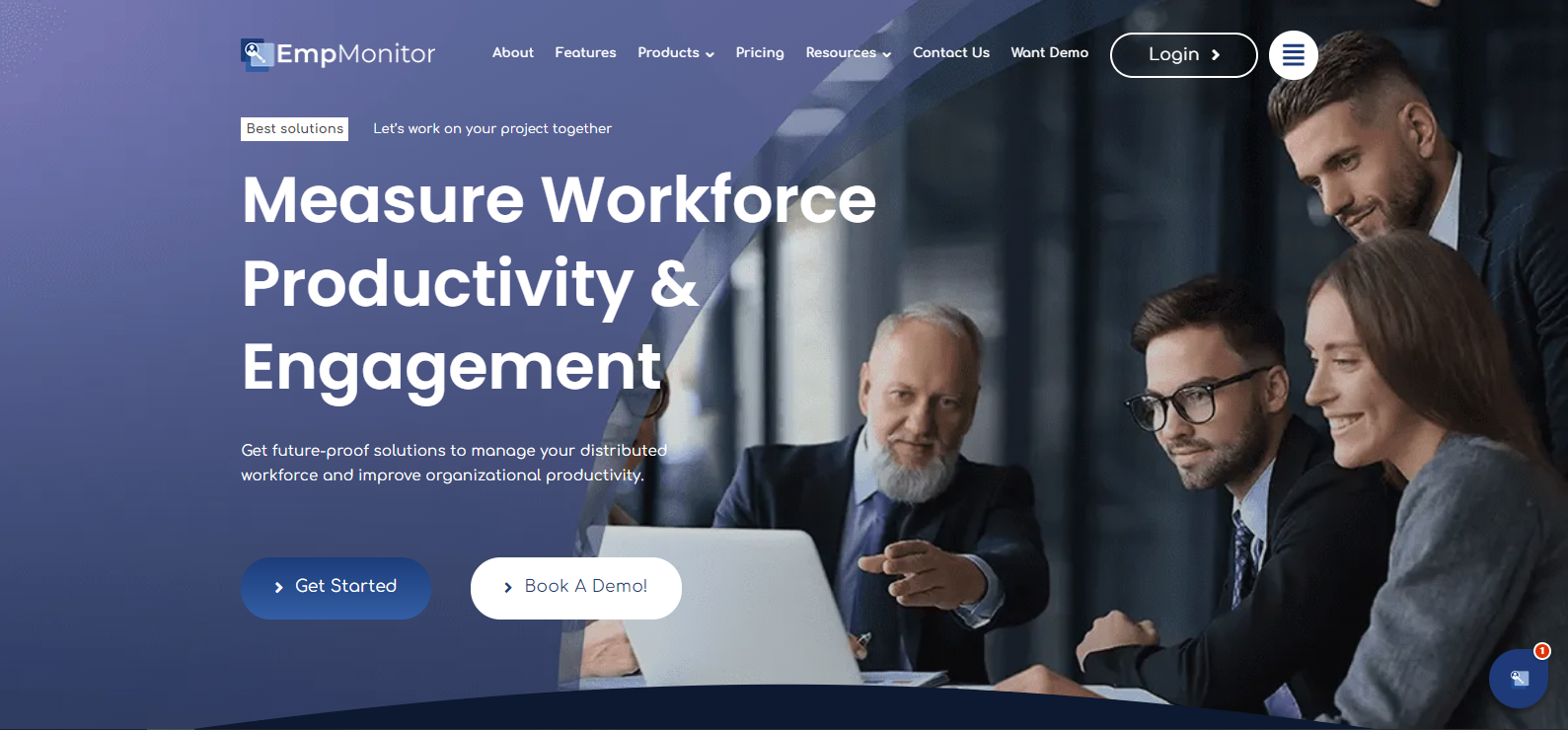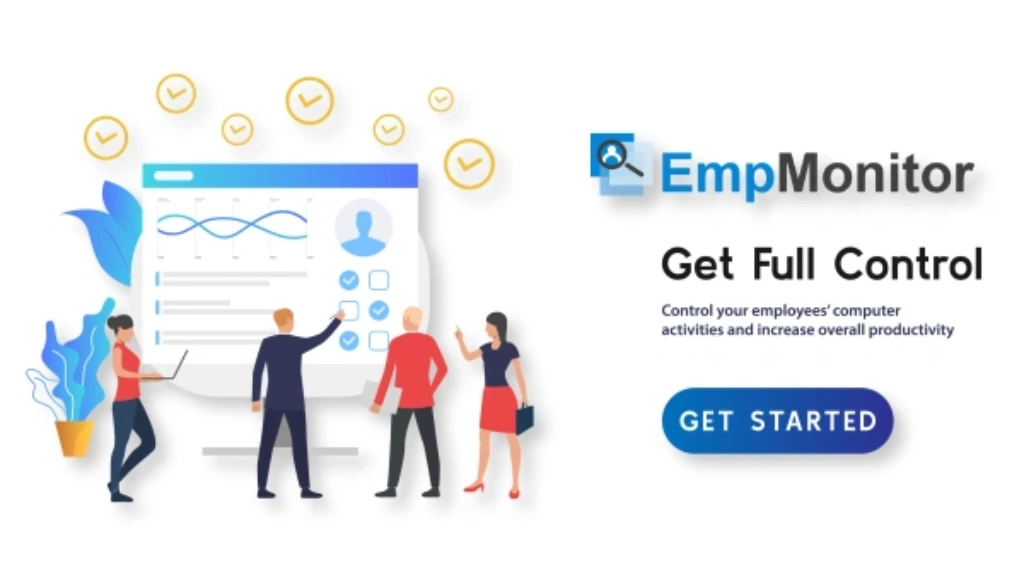These days, businesses are under more pressure than ever to stay efficient. With tighter budgets and higher demands, making the most of your team’s time and effort is crucial. That’s exactly where workforce management optimization makes a big difference.
With a structured and technology-driven approach, businesses can streamline processes, improve employee performance, and reduce operational costs, all while boosting overall satisfaction for both employees and customers.
Let’s explore what it means to streamline workforce operations, how it works, and how you can master it to drive results across your organization.
In a hurry? Listen to the blog instead!
What Is Workforce Management Optimization?
It refers to the strategic process of analyzing, improving, and automating various workforce-related activities to maximize productivity and efficiency. It’s not just about scheduling shifts or tracking hours; it’s a holistic approach to enhancing how your team operates.
This practice combines forecasting, real-time tracking, employee engagement, and performance management to ensure that the right people are doing the right jobs at the right times. It also includes the intelligent use of technology and data analytics to refine operations continuously.
Why Is Workforce Management Optimization So Important?
Workforce management optimization is no longer just a buzzword; it’s a critical strategy for today’s businesses.. When implemented effectively, it delivers measurable improvements across several key areas:
- Reduced Operational Costs: By aligning labor resources with demand and automating routine tasks, companies can significantly lower unnecessary expenses.
- Increased Employee Productivity: Optimization tools help assign the right tasks to the right people at the right time, eliminating downtime and boosting output.
- Enhanced Customer Service Levels: With better staffing forecasts and real-time adjustments, customer-facing teams are more responsive and efficient.
- Improved Compliance and Accuracy: Automated tracking ensures businesses meet labor laws, industry regulations, and internal policies with greater precision.
- Stronger Employee Engagement and Retention: Clear expectations, fair scheduling, and performance feedback foster a more motivated and loyal workforce.
Ultimately, aligning people, processes, and technology drives sustainable business growth in a way that benefits both employees and the bottom line.
Key Components Of Workforce Management Optimization
A successful workforce strategy is built on several core components that work together to enhance efficiency, reduce costs, and boost employee satisfaction. Here’s a closer look at each:
1. Workforce Forecasting:
Workforce forecasting leverages historical data, seasonal trends, and business insights to anticipate future staffing requirements. By anticipating demand accurately, businesses can avoid the costly consequences of understaffing (which hurts service quality) or overstaffing (which increases labor costs). Advanced tools can also account for variables like holidays, weather, and promotional events.
2. Scheduling and Shift Planning:
Effective scheduling ensures the right employees are working at the right times. Optimization software considers employee availability, skill sets, workload distribution, and legal requirements to create fair, compliant, and efficient shift plans. Real-time flexibility allows managers to adapt schedules quickly in response to absences or sudden demand spikes.
3. Time and Attendance Tracking:
Modern time-tracking systems go beyond simple clock-in/clock-out features. They offer real-time visibility into employee attendance, manage paid time off (PTO), and integrate with payroll systems. This reduces manual errors, prevents time theft, and ensures that employees are compensated accurately and on time.
4. Performance Monitoring:
Tracking employee performance is vital for productivity and growth. By measuring key performance indicators (KPIs), such as task completion rate, customer satisfaction, and attendance, managers can recognize high performers, address inefficiencies, and provide targeted training. It also supports data-driven decision-making for promotions and role adjustments.
5. Compliance and Labor Law Management:
Labor regulations vary by region and industry, making compliance a complex but crucial aspect of workforce management. Optimization tools can automatically flag scheduling conflicts, overtime issues, or rest period violations, helping organizations avoid penalties and maintain ethical work environments. Built-in policy checks ensure internal rules are also upheld consistently.
How Workforce Management Optimization Differs From Workforce Optimization?
The terms are often used interchangeably, but there’s a distinction to understand.
When comparing workforce management vs workforce optimization, workforce management focuses on operational aspects like scheduling, attendance, and timekeeping. In contrast, workforce optimization—often supported by a workforce optimization system, dives deeper into analytics, employee behavior, and customer interaction quality.
Similarly, the conversation about workforce optimization vs workforce management often arises in industries that value both customer experience and back-end efficiency. While they overlap in many ways, workforce optimization leans more toward refining the quality and effectiveness of interactions rather than administrative processes.
Benefits Of Workforce Management Optimization
Implementing a well-designed workforce management optimization strategy delivers benefits that ripple across every layer of your organization:
Enhanced Productivity:
With the right tools and structure, your workforce can operate more efficiently. Employees are more focused, resources are better utilized, and managers have real-time data to make smart decisions.
Cost Reduction:
Automating scheduling, reducing overtime, and eliminating inefficiencies directly contribute to cost savings. Fewer human errors also mean fewer financial repercussions.
Improved Employee Engagement:
When employees have clear schedules, manageable workloads, and the right tools, job satisfaction increases. Happy employees are more productive and less likely to leave.
Better Customer Experience:
An optimized workforce ensures that the right people are available when customers need them most, leading to quicker service and higher satisfaction rates.
Real-Time Agility:
Market demands can change fast. Workforce management optimization through the right workforce management software empowers businesses to adapt quickly by leveraging real-time data and predictive insights.
Also Read:
Industry Applications Of Workforce Management Optimization
Workforce management optimization isn’t one-size-fits-all; it adapts to the unique demands of different industries. Here’s how it supports critical sectors:
Retail:
In the retail sector, demand can change rapidly due to seasonal shifts, sales events, or holidays. Smart workforce strategies help store managers align staffing levels with customer footfall, ensuring smooth operations and better service. They also reduce unnecessary labor costs by preventing overstaffing during slow periods.
Healthcare:
Healthcare institutions operate around the clock and need precise staffing to maintain quality patient care. Optimization tools assist in managing rotating shifts, department-specific needs, and compliance with labor laws. This results in better workload distribution, reduced burnout, and consistent care delivery.
Manufacturing:
Manufacturing facilities rely heavily on workforce efficiency to meet production targets and maintain safety standards. workforce optimization strategies assign the right people with the right skills to the right shifts, ensuring minimal downtime and streamlined operations. It also supports compliance by tracking certifications and labor requirements.
Call Centers:
Call centers face constant fluctuations in call volumes and service demands.Workforce optimization allows for predictive scheduling, ensuring the right number of agents are on hand during peak times. It also supports performance monitoring to maintain service quality and operational efficiency.
What Is The Role Of Technology In Workforce Management Optimization?
Today’s workforce management optimization is powered by cutting-edge software and tools. These systems use AI, machine learning, and big data to help organizations make smarter, faster decisions.
Let’s look at the top tech trends:
Artificial Intelligence (AI):
AI-driven tools predict labor needs, automate scheduling, and even match employees to shifts based on skillsets and historical performance.
Mobile Access:
Mobile apps allow employees to view schedules, request time off, and clock in or out remotely, adding flexibility and transparency.
Cloud-Based Platforms:
Cloud technology ensures scalability, security, and ease of access. It also reduces the burden of infrastructure costs.
Analytics and Dashboards:
Real-time dashboards show performance metrics, attendance trends, and forecasting accuracy, enabling better decision-making.
One standout tool in this space is EmpMonitor, which combines real-time employee monitoring, time tracking, insider threat prevention, and project management, all from one intuitive dashboard. It empowers companies to align their workforce optimization efforts with actionable data and automation.
How Can EmpMonitor Help You Master Workforce Management Optimization?
When it comes to executing workforce management optimization effectively, having the right tools is essential. One of the most versatile and robust platforms in this space is EmpMonitor, a comprehensive workforce management tool that goes beyond basic tracking to empower HR teams, managers, and business leaders with full visibility and control over their workforce operations.
Here’s how EmpMonitor can significantly enhance your strategy for managing and optimizing workforce operations:
Real-Time Employee Monitoring:
EmpMonitor offers live tracking of employees working remotely, helping you monitor apps, websites, and idle time without disrupting workflow. These insights enable better workload balancing and performance management.
Automated Time Tracking and Smart Timesheets:
Its built-in time-tracking system delivers accurate, real-time data on how employees spend their shifts. It also generates smart timesheets that reveal trends in productivity, helping teams make informed staffing decisions.
User Activity and Behavior Analytics:
With detailed hourly and daily reports, you can observe user behavior, identify top performers, and detect inefficiencies. This context-rich data is critical for optimizing team output and improving accountability.
Attendance & Leave Management Dashboard
EmpMonitor’s attendance tracking system automates clock-ins, leave requests, and reporting, all from a single dashboard. This helps eliminate manual errors and guarantees adherence to labor regulations.
Insider Threat Detection and Risk Prevention:
Security is a growing concern in workforce management. EmpMonitor allows you to flag suspicious behavior, monitor restricted app usage, and alert you to potential internal threats, ensuring organizational safety.
Live Screencasting and Screen Recording:
EmpMonitor enables managers to monitor employee screens either in real time or via secure, time-stamped playback recordings. This is invaluable for training, remote collaboration, and maintaining transparency in distributed teams.
Project & Task Management Integration:
Seamlessly plan projects, allocate resources, and track progress with built-in project management tools. You’ll get detailed performance insights that help teams stay aligned with deadlines and deliverables.
EmpMonitor doesn’t just track, it empowers. With its full suite of features designed for productivity, security, and operational efficiency, it’s a perfect companion for any business looking to excel in workforce management optimization.
How To Choose The Right Workforce Management Optimization Software?
When selecting workforce management optimization software, businesses must consider usability, integration capabilities, and scalability.
The ideal solution should offer:
- Automated scheduling and shift planning
- Real-time reporting and analytics
- Mobile access for employees and managers
- Integration with HR, payroll, and ERP systems
- Compliance management features
Choosing the right software comes down to finding a solution that aligns with your business needs while supporting long-term efficiency, compliance, and workforce satisfaction.
Real-World Impact Of Workforce Management Optimization
Consider this example: A global retail brand adopted a smart workforce solution to streamline store operations. The result? A 15% reduction in labor costs and a 20% improvement in customer satisfaction within six months.
In another case, a healthcare provider used workforce optimization software to better allocate nursing staff based on real-time patient needs. This led to a measurable improvement in patient outcomes and reduced staff burnout.
These examples highlight the powerful impact that intelligent workforce strategies can have on any organization.
Also Read:
How To Integrate Workforce Management Monitoring For Long-Term Success?
Effective workforce management optimization goes beyond scheduling and forecasting, it requires continuous oversight of how your workforce operates over time. This is where workforce monitoring becomes essential to long-term success.
By integrating workforce management monitoring into your daily operations, businesses can maintain visibility into key performance indicators such as attendance, task progress, productivity levels, and system usage. This ongoing monitoring helps managers identify inefficiencies, track behavioral trends, and make timely, informed decisions to enhance team output.
Using reliable tools like EmpMonitor, organizations can automate this monitoring process and gain real-time access to data that drives performance improvements. With continuous tracking in place, teams can proactively resolve issues, improve accountability, and align operations with strategic goals.
Ultimately, a strong workforce optimization plan always includes effective monitoring as a core component, ensuring agility, consistency, and productivity in the long run. Using workforce monitoring software ensures that businesses have real-time visibility into operations, helping managers identify patterns and take proactive steps to boost performance.
Conclusion
In the modern workplace, efficiency and agility are non-negotiable. Workforce management optimization allows companies to strike that perfect balance between cost control, productivity, and employee satisfaction.
With the right tools, strategies, and mindset, you can transform your workforce into a high-performing engine that drives long-term success.
Tools like EmpMonitor simplify this journey by offering real-time insights, smart scheduling, and seamless workforce visibility.
Whether you’re a small startup or a large enterprise, now is the time to embrace workforce management optimization as a core part of your business strategy.
By leveraging smart tools like workforce management optimization software, aligning with real-time data insights, and fostering transparent communication, you’ll not only overcome operational challenges but also gain a serious competitive advantage.
FAQs
1. How can workforce management optimization support remote or hybrid teams?
Ans. It supports remote or hybrid teams by enabling seamless tracking, scheduling, and communication through cloud-based tools. With real-time activity monitoring and performance analytics, businesses can ensure consistency, accountability, and productivity regardless of location.
2.What challenges do companies face when implementing workforce management optimization for the first time?
Ans. Common challenges include resistance to change from employees, lack of proper training, integration issues with existing systems, and misalignment between software capabilities and business goals. Overcoming these requires clear communication, onboarding support, and phased implementation.
3.Can workforce management optimization help with seasonal or temporary workforce planning?
Ans. Yes, it can. Optimization tools use historical and predictive data to plan for seasonal fluctuations. This helps in managing temporary hires, aligning staffing levels with demand, and avoiding under- or over-staffing during peak and off-peak periods.

















